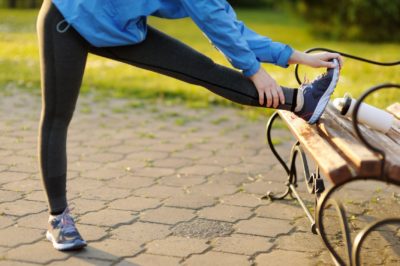
In the U.S., ACL and other knee injuries are one of the most common orthopedic and sports-related injuries. For athletes, physically-active folks, and health-conscious individuals, suffering a knee injury can be particularly difficult as they find themselves suddenly immobilized, with minds craving for exercise. Fortunately, as with any injury, there is always something that can be done. As your knees heal, you need only to modify and adapt your training regimen and lifestyle so that you don’t lose the hard-earned strength, stamina, and sport-specific fitness that you’ve so far acquired.
Consider the following 3 tips on how to remain active with a knee injury and keep yourself in the proverbial game.
Tips to Remain Active
1. Find the Right Exercise Regimen
Knee or ACL injuries are particularly problematic as most endurance exercises, and many strength training activities, require activity and flexion in the knees. Thankfully, an injured knee should not keep you bedridden and away from any physical activity. There are still many other activities that you can do to stay active and physically fit, and even recuperate faster.
You do have to be smart about choosing the exercises and always (always!) consult your doctor, physical therapist, or other medical professional. Depending on the severity and extent of your injury, they may recommend a variety of exercises and activities and keep you from exacerbating your condition.
Knee-Friendly Cardio
It’s difficult to think of cardio exercises that do not require flexion and extension of your knees. You may have to wait until you’ve fully recovered to run, jog, or hike again. Nevertheless, you still have many other options for cardio that do not require one knee (or two). Ask your doctor about kayaking, one-legged cycling, rowing, or using an arm ergometer (the handcycle machine).
You could even try swimming, which is a favorite of many with joint or muscle issues! Of course, you’ll need some support or a buoy to keep you from kicking with your legs. Check your local swimming pool if hydrotherapy classes are available. As soon as you are able and approved by your physical therapist, return to doing regular walks, but keep them light and short.
Keep Flexibility and Strengthen Other Muscle Groups
Along with cardio, remember to keep your flexibility and strength up as well. Although you should expect some muscle loss in and around your problem knee, you can still train your other muscle groups.
Again, consult your doctor or a physical therapist before attempting any strength training methods. Depending on your condition, your PT may recommend assisted bench presses for your chest and arm muscles, Lat pulldowns or seated cable rows for your back, presses for your shoulders, as well as appropriate core exercises for your abs and obliques. You may also inquire of their recommended repetition and load for each exercise.
With strength training also comes the importance of flexibility exercises. These activities will keep you nimble, lower risk of injury, and make for more efficient muscles.
Always Warm Up Thoroughly
Whatever physical activity you end up doing, never forget to warm up. The proper warm-up techniques deter injury and prepare you both physically and mentally.
2. Wear the Right Gear
You’ll also need to pay closer attention to your exercise gear whenever you’re physically active. Although you won’t be training your knee directly, a good supportive shoe that absorbs impacts will be invaluable to your recovery.
You could also give resistance bands a try, particularly when your weight training or stretching. These will help reduce any pressure on your knees.
3. Focus on Other Healthy Habits
An active mind will motivate you to stay physically active as well. Of course, you won’t get as much exercise as before, at least not until you fully recover. Thus, in the meantime, you can set your mind to other healthy activities. For example, now would be a great time to improve your diet and sleep routine. Find a good diet that will help you maintain and keep the weight off (or lose, depending on your doctor’s orders.
Getting better quality sleep is paramount regardless if you’re injured or not. In fact, it’s as important as exercise and diet for a healthy and active lifestyle.
Final Thoughts
No one wants to lose all the progress and fitness gains they’ve made when they’re injured. And with the right mindset and determination, you won’t have to. Find the right exercise, equip yourself with the right gear, and focus on other healthy habits. Give some time to healing and rehabilitation. You’ll be jumping again before you know it. Never let an injury discourage or demotivate you from reaching your health or fitness goals.
Thank you to
Aaron Burns, Owner and freelance writer for Apex Health & Care.
